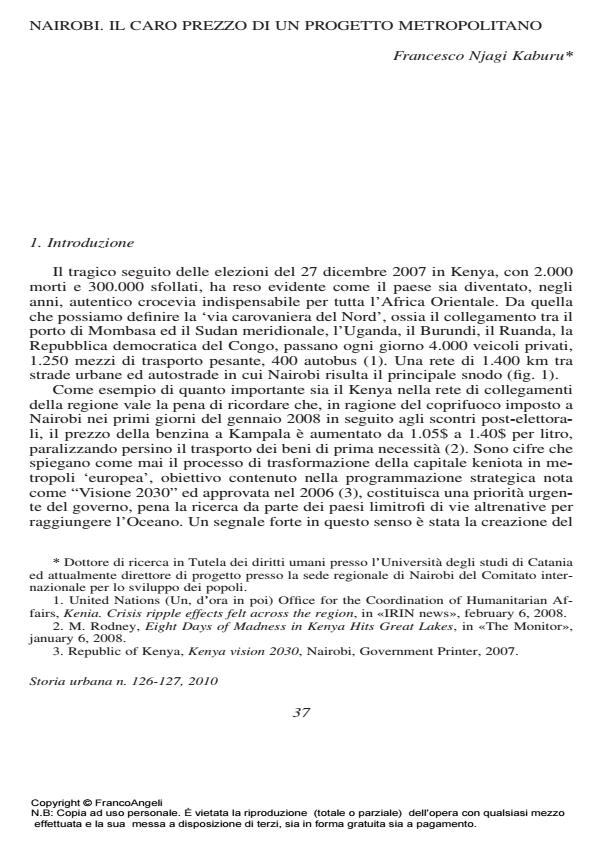Nairobi: the high price for a metropolitan project
Journal title STORIA URBANA
Author/s Kaburu Francesco Njagi
Publishing Year 2010 Issue 2010/126/127
Language Italian Pages 29 P. 37-65 File size 4580 KB
DOI 10.3280/SU2010-126003
DOI is like a bar code for intellectual property: to have more infomation
click here
Below, you can see the article first page
If you want to buy this article in PDF format, you can do it, following the instructions to buy download credits

FrancoAngeli is member of Publishers International Linking Association, Inc (PILA), a not-for-profit association which run the CrossRef service enabling links to and from online scholarly content.
In August 2009 Kenya’s citizens were counted for the fifth census since its independence (1964). The 1999 survey confirmed how the Rift Valley Province and Nairobi (that from a geo-demographic point of view includes the Central Province) have been the main poles of attraction of Kenya’s internal migrations. While waiting for the results of the last census some crucial issues are suspended: how did the influx of more than a million and a half of people from 1969 until today impact on the urban features of Nairobi? How did local and national policies on the matter of immigration change through the decades? In order to answer to these questions the essay went through the history of the town from its foundation as a railway station in 1899 and its designation as the capital of the East African Protectorate and then as the main hub of the British East African Colony. The urban plans that involved Nairobi since its initial stages have led the capital of Kenya to being today one of the most interesting for the analysis of the sub-Saharan urban development.
Keywords: Nairobi, Colonial settlement, Metropolitan growth
Kaburu Francesco Njagi, Nairobi. Il caro prezzo di un progetto metropolitano in "STORIA URBANA " 126/127/2010, pp 37-65, DOI: 10.3280/SU2010-126003